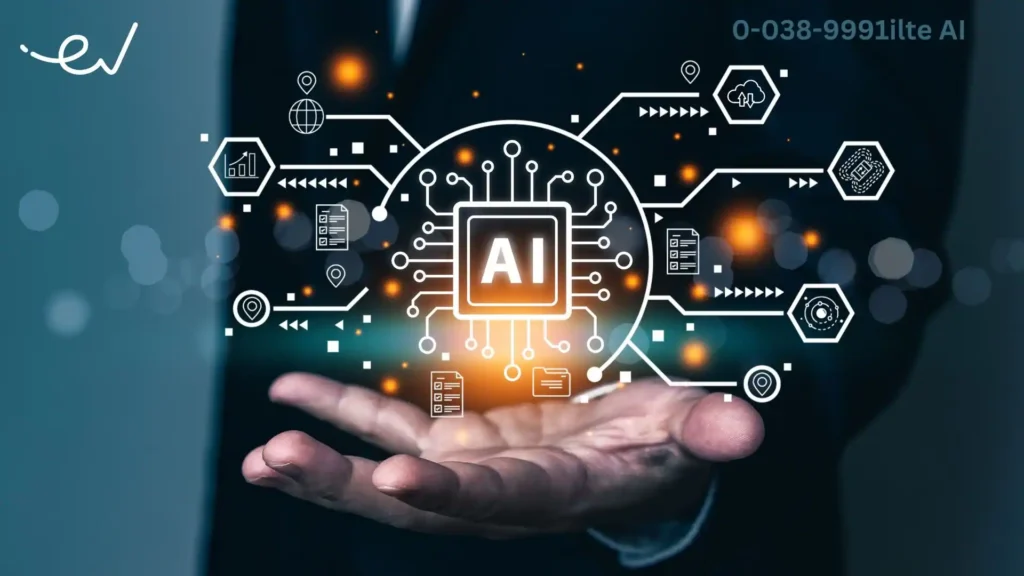
Introduction to Artificial Intelligence (AI)
Artificial Intelligence (AI) 0-038-9991ilte AI is no longer just a concept from science fiction. It’s woven into the fabric of our daily lives, enhancing everything from how we shop online to how businesses operate. You may have heard terms like “machine learning” and “deep learning,” but what do they really mean? As AI continues to evolve, understanding its fundamentals becomes crucial for everyone—from tech enthusiasts to business leaders.
This blog post will take you through an exciting journey into the world of 0-038-9991ilte AI. Whether you’re curious about its history or looking for practical ways to implement it in your projects, we’ve got you covered. Get ready to demystify this fascinating field and discover how it can transform industries and everyday life alike!
Understanding the Basics of Artificial Intelligence
Artificial Intelligence, or AI, refers to the simulation of human intelligence in machines. These systems are designed to think and learn like humans. They can solve problems, recognize patterns, and make decisions.
At its core, AI operates using algorithms. These mathematical models enable computers to process information efficiently. Whether it’s voice recognition or image processing, these algorithms play a critical role.
AI can be categorized into two main types: narrow and general intelligence. Narrow AI excels in specific tasks like playing chess or recommending movies based on user preferences. General AI is still largely theoretical; it aims for machines that possess cognitive abilities akin to those of humans.
Understanding the basics sets the stage for delving deeper into this fascinating field. From everyday applications to groundbreaking technologies, the impact of artificial intelligence continues to grow exponentially across various sectors.
The History and Evolution of AI
The journey of artificial intelligence 0-038-9991ilte AI began in the mid-20th century. Early pioneers like Alan Turing and John McCarthy laid the groundwork. They envisioned machines that could think and learn.
In the 1950s, AI programs such as Logic Theorist emerged. These systems mimicked human reasoning but faced limitations due to hardware constraints. Progress was slow, leading to periods known as “AI winters,” where interest and funding dwindled.
By the 1980s, expert systems gained traction. These were designed for specific tasks, offering practical solutions in industries like healthcare and finance.
The late 1990s ushered in a new era with advancements in machine learning algorithms. The explosion of data and computing power paved the way for breakthroughs we see today.
Modern AI is marked by deep learning techniques that enable complex problem-solving across various sectors—from autonomous vehicles to personalized recommendations on streaming platforms. Each step has brought us closer to realizing true intelligent machines.
Types of AI: From Narrow to General Intelligence
Artificial Intelligence can be categorized based on its capabilities. The most common type is Narrow AI, also known as Weak AI. This form specializes in specific tasks, like voice assistants or recommendation algorithms. It excels in its designated area but lacks the ability to perform outside that scope.
On the other end of the spectrum lies General AI, or Strong AI. This advanced version aims to replicate human-like understanding and reasoning across various domains. Although we haven’t reached this stage yet, it’s a thrilling concept that sparks discussions about potential future scenarios.
Another emerging category is Superintelligent AI, which surpasses human intelligence altogether. While still theoretical, it raises questions about control and ethics in technology development.
Each type serves distinct purposes and poses unique challenges for researchers and developers alike. Understanding these differences helps shape our approach to building responsible intelligent systems.
Machine Learning and its Role in AI
Machine learning is a crucial component of artificial intelligence. It enables systems to learn from data and improve over time without being explicitly programmed.
At its core, machine learning involves algorithms that analyze patterns within datasets. These patterns help machines make predictions or decisions based on new information.
There are various types of machine learning, including supervised, unsupervised, and reinforcement learning. Each serves different purposes and applications in the AI landscape.
Businesses leverage machine learning for tasks like personalized recommendations or fraud detection. The technology continually evolves as more data becomes available.
As industries embrace digital transformation, the importance of machine learning grows exponentially. Its ability to adapt makes it an invaluable asset in creating smarter solutions across sectors.
Implementing AI: A Step-by-Step Guide
Implementing AI can seem daunting, but breaking it down into manageable steps makes the process smoother. Start by identifying the specific problem you aim to solve with AI. Understand your goals clearly.
Next, gather relevant data. Quality data is crucial for training any AI model effectively. Ensure your dataset is clean and representative of the situation you’re addressing.
Once you have your data, choose an appropriate machine learning algorithm that fits your needs. This could range from supervised learning approaches to unsupervised methods.
Then comes building and training your model. Use robust tools and frameworks available in today’s market to streamline this phase.
After training, evaluate your model’s performance rigorously using metrics tailored to your objectives. Fine-tune parameters as necessary before deployment.
Keep monitoring its effectiveness post-implementation. Adaptations may be needed based on real-world feedback or changing conditions in the environment where it operates.
Common Challenges and Ethical Considerations in AI Implementation
Implementing AI brings a host of challenges. Data privacy stands as one of the foremost concerns. Organizations must navigate complex regulations while ensuring user data remains secure.
Bias in algorithms poses another significant issue. If not monitored, AI systems can perpetuate stereotypes and inequalities found in training data. This can lead to unfair outcomes that impact lives and businesses alike.
Transparency is crucial yet often lacking in AI models. Stakeholders need to understand how decisions are made, but many advanced systems operate as “black boxes.” This obscurity raises questions about accountability when errors occur.
Ethical considerations also extend to job displacement. As automation increases, workforce shifts may leave some workers behind without adequate support or retraining programs.
Balancing innovation with responsibility remains a daunting task for developers and companies venturing into the realm of artificial intelligence.
Future of Artificial Intelligence
The future of artificial intelligence is both exciting and complex. As technology advances, we can expect AI to become more integrated into everyday life.
Imagine smart homes that learn your habits, adjusting the environment to suit your preferences. Healthcare could see breakthroughs as AI analyzes vast amounts of data for better diagnosis and treatment plans.
However, with these advancements come questions about ethics and privacy. How do we ensure responsible use? The balance between innovation and regulation will be crucial.
Moreover, businesses are likely to leverage AI for decision-making processes, enhancing productivity while reducing human error.
Education may also transform as personalized learning experiences evolve through intelligent tutoring systems tailored to individual needs.
As we navigate this landscape, collaboration among technologists, ethicists, and society will shape a future where AI benefits all humanity.
Conclusion
As we navigate the fascinating world of 0-038-9991ilte AI, we uncover a landscape filled with potential and innovation. The journey through understanding its core principles, history, and various types gives us insights into where this technology stands today.
The evolution from narrow to general intelligence showcases not just advancements in capability but also shifts in how businesses and individuals interact with machines. Machine learning plays a pivotal role here; it serves as the backbone for many applications that enhance efficiency and drive decision-making processes.
However, implementing AI is not without its hurdles. Ethical considerations loom large as we integrate these technologies into our lives. Striking a balance between leveraging AI’s capabilities while ensuring responsible use is essential for sustainable progress.
Looking ahead, the future of artificial intelligence holds immense promise. As research continues to unfold, innovations will likely reshape industries and daily life alike. Embracing this change can help us harness the power of 0-038-9991ilte AI effectively while addressing challenges along the way.
AI is more than just technology; it’s an evolving narrative that shapes our society’s fabric. Engaging with it thoughtfully allows us to explore new frontiers together.





